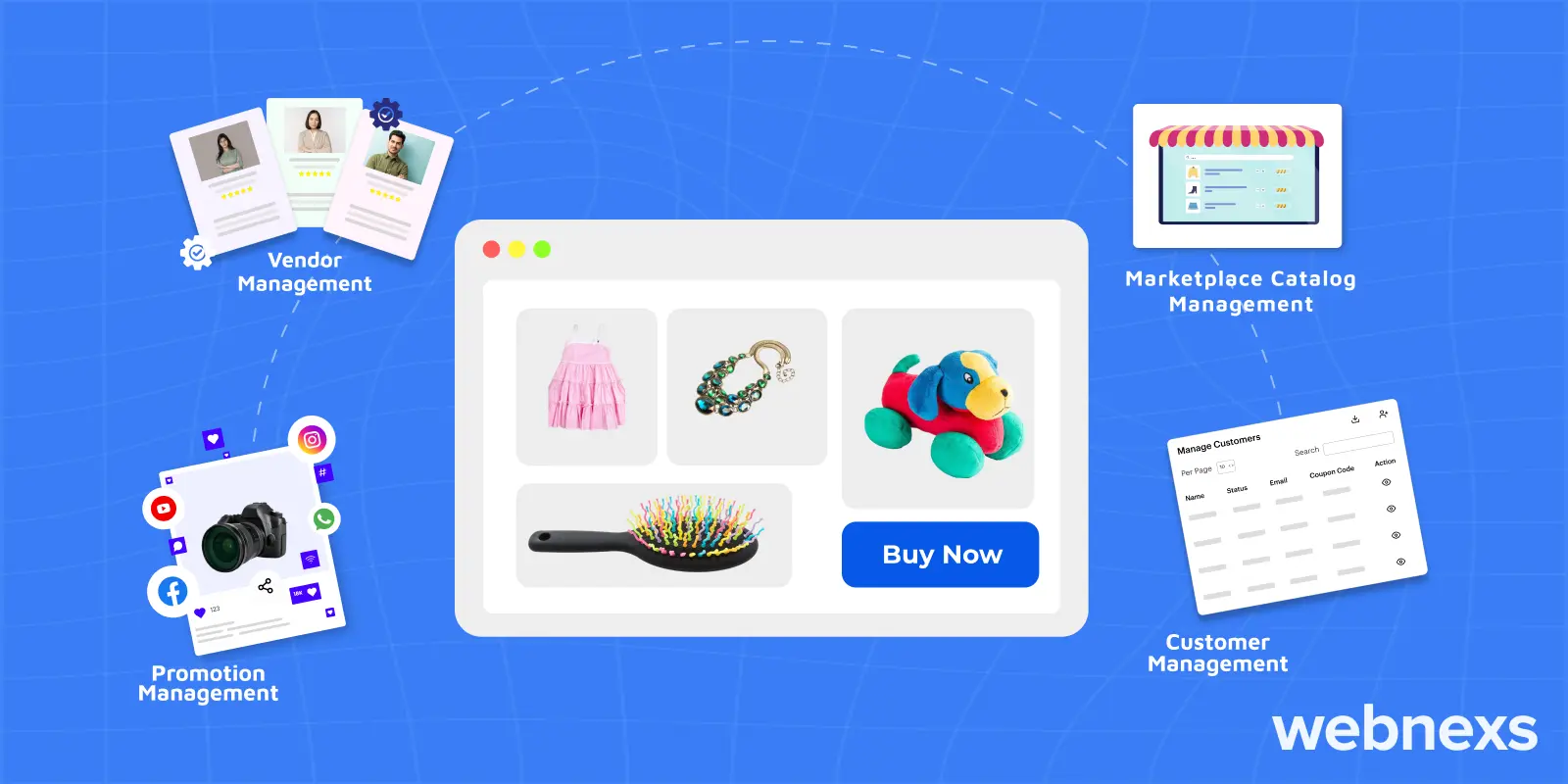Thinking about creating a multi vendor ecommerce website, but not sure what features you need? You’re in the right place!
A multi-vendor ecommerce site lets multiple sellers list and sell their products, unlike a single-vendor store that has only one seller.
This gives your customers more choices while allowing vendors to manage their inventory, pricing, and orders. For marketplace owners, it’s a great way to grow fast without having to stock products.
In this guide, we’ll walk you through the multi vendor ecommerce features list – 15 must-have features that will help you create a successful marketplace.
Whether it’s vendor management, payment processing, or marketing tools, these features will make your site run smoothly and help it grow into a profitable and scalable business.
Key Takeaways on Multi Vendor Ecommerce Website Features List
- A good looking Multi Vendor Ecommerce Features List should cover easy vendor registration, simple product uploads, and automated order management for smooth marketplace operations.
- It is best to have a Multi Vendor Ecommerce Marketplace with multiple payment options, flexible commission settings, and reliable shipping choices to support vendors and buyers.
- Key Multi Vendor Ecommerce Features like SEO-friendly pages, built-in marketing tools, and social media sharing help boost visibility and sales.
- Detailed reports and analytics help marketplace owners track performance and make smart business decisions.
- Strong security measures, clear policies, and an easy dispute resolution system build trust between sellers and customers.
Elevate Your Marketplace with Powerful Features!
Multi-Vendor Marketplace Trends and Growth Insights
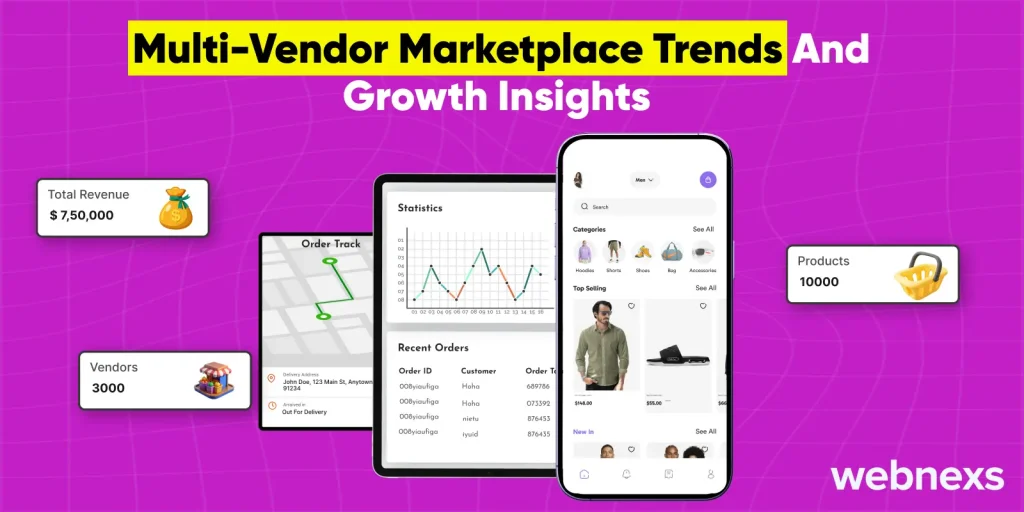
The Marketplace model has become a dominant force in the retail industry, including both brick-and-mortar and ecommerce sales. The projected growth figures are impressive and promising for budding ecommerce marketplace owners to continue their efforts.
The forecast number of global sales, considering only the multi-vendor marketplace, is $8.7 trillion by 2025.
The skyrocketing growth is attributed to changing customer preferences, where 75% of frequent online shoppers express a preference for their favorite retailers to operate a marketplace.
This shift highlights the importance of having a well-structured marketplace features list that enhances vendor and customer experiences. Growth predictions don’t stop there. By 2027, 62% of the market share is expecteAd to be driven by online marketplaces.
1. Overall Ecommerce Growth
i) Global Sales Projections
A whopping $7.4 trillion is predicted to be reached by 2025, which leads to a 74% increase from 2020’s $4.2 trillion in global ecommerce sales.
ii) Continental Growth Rates
North America is marked to exceed $1 trillion by 2025. This market is dominated by the US, Canada, and Mexico, with the US leading. The projected CAGR is 8-10% for the forthcoming years.
2. Product Category Growth
i) Mobile Commerce
With the penetration of technology, the electronics industry has experienced a pricing revolution. As a result, mobile commerce is expected to drive more than $710 billion in sales by 2025.
ii) Social Commerce
The integration of social media into ecommerce platforms is estimated to exceed mobile ecommerce, reaching a staggering $1.2 trillion by 2025.
3. Country-Specific Growth
i) China
A significant portion, that accounts for over half of the global ecommerce retail sales, is set to reach $3.3 trillion by 2025.
ii) Turkey
It has become the fastest growing ecommerce market globally. The projected CAGR is 11.58% between 5 years from 2024 – 2029.
15 Essential Multi-Vendor Ecommerce Website Features
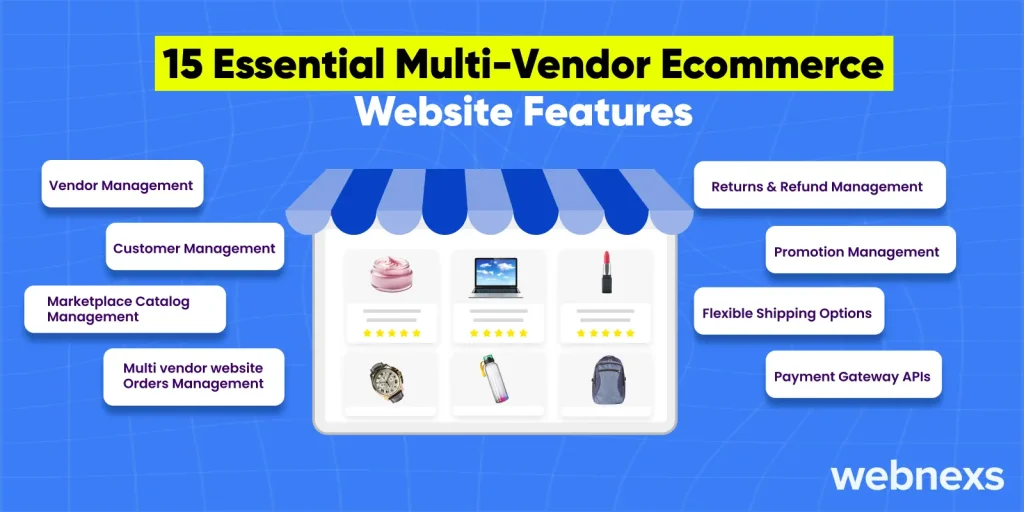
1. Vendor Management
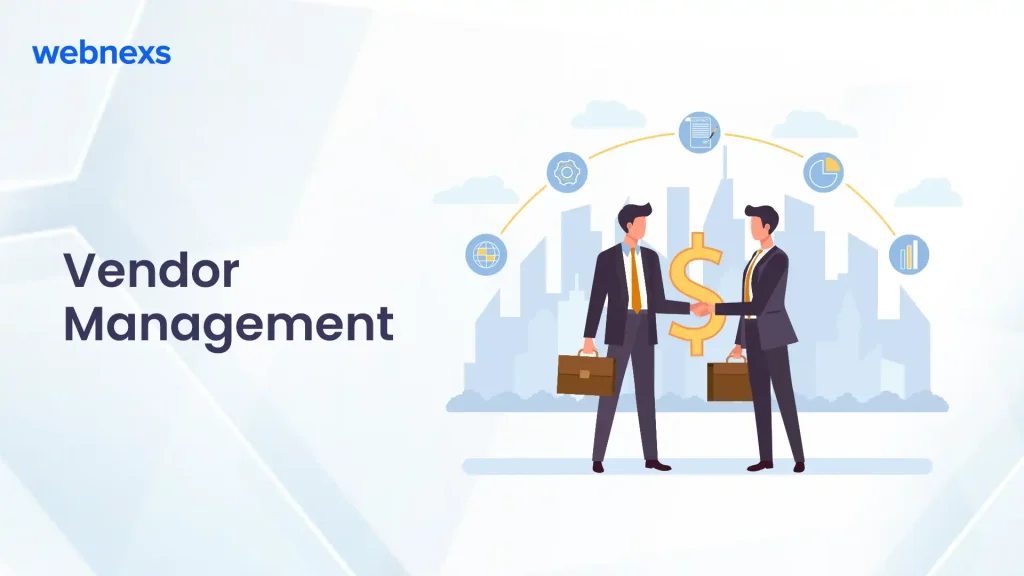
The solution offers a separate interface for vendors to feature or edit, view, and manage their product details, order details, and transactions. There are various functionalities added within the vendor panel for categories and brand management to help purchasers browse different brands and shop by brand.
Over 80% of ecommerce marketplaces globally use a separate vendor interface to manage products, transactions, and order details, highlighting the importance of streamlined vendor management for operational efficiency.
2. Customer Management
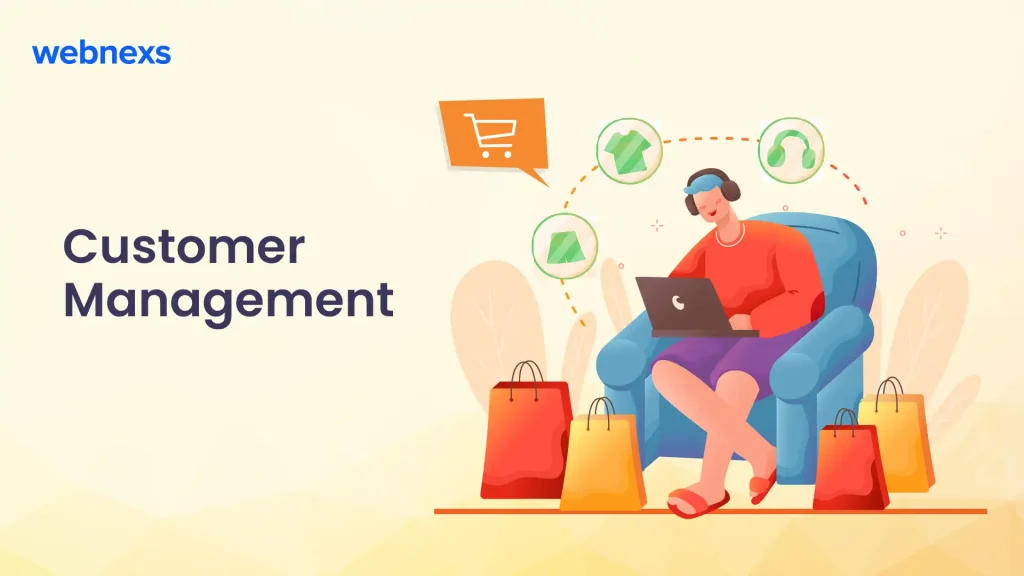
With this module, you get a particularly intuitive interface that permits customers to quickly search and browse the products they’re trying to find. This customer management helps in understanding and catering to their overall shopping experience.
80% of customers expect personalized experiences when shopping online. Advanced customer management systems with intuitive interfaces improve the likelihood of repeat purchases by 70%.
Enhance Engagement with Powerful Customer Management Tools!
3. Marketplace Catalog Management
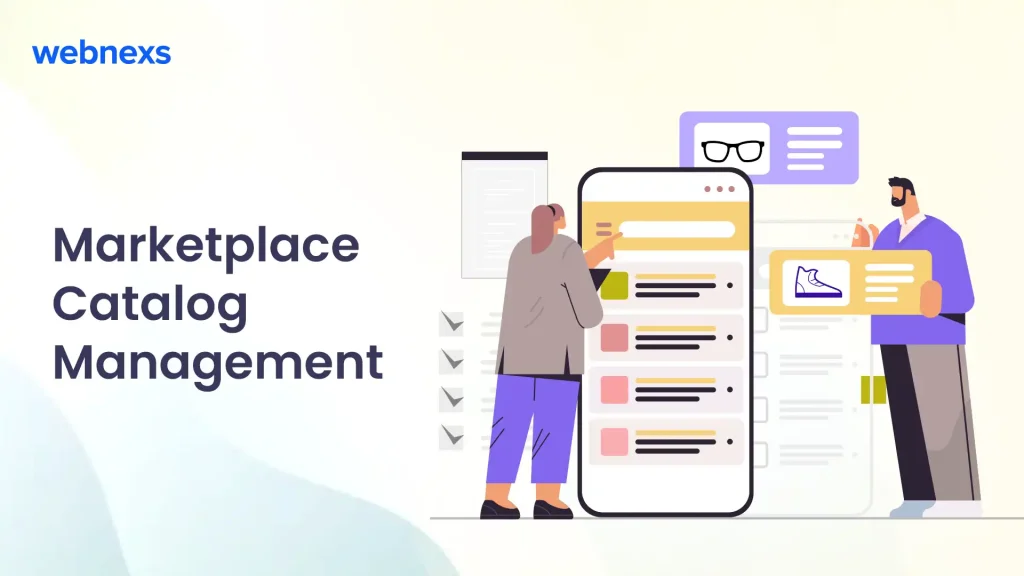
Products are the lifeline of any marketplace. You’ll add products from the seller through the admin panel. You’ll also create a product catalog for multiple brands and products from the backend. The product catalog can be managed by the admin or the seller by performing actions like adding, editing, or deleting.
82% of shoppers look for a wide selection of products from different brands before making a purchase, making effective catalog management crucial to attracting a diverse customer base.
4. Multi Vendor Website Orders Management
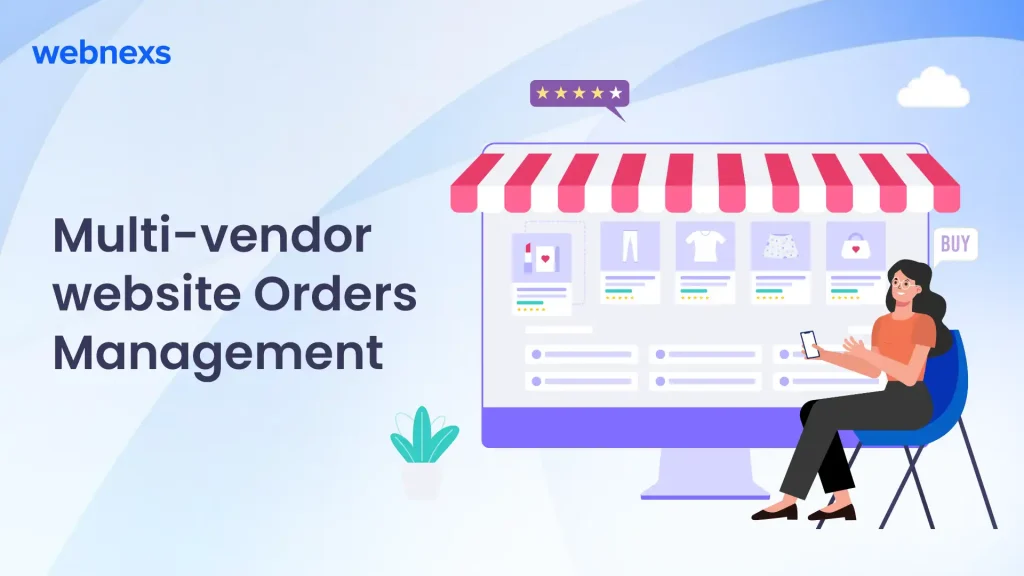
Order management is a vital part of any business owner’s operations. Webnexs will be a one-stop solution for managing order details, order transactions, and other order-related activities, which can be managed from the seller panel, and the admin can manage the seller’s orders from the admin panel.
70% of e-commerce businesses experience a 25% increase in operational efficiency by streamlining order management across multiple vendors. This helps reduce errors and improve overall customer satisfaction.
5. Returns and Refund Management
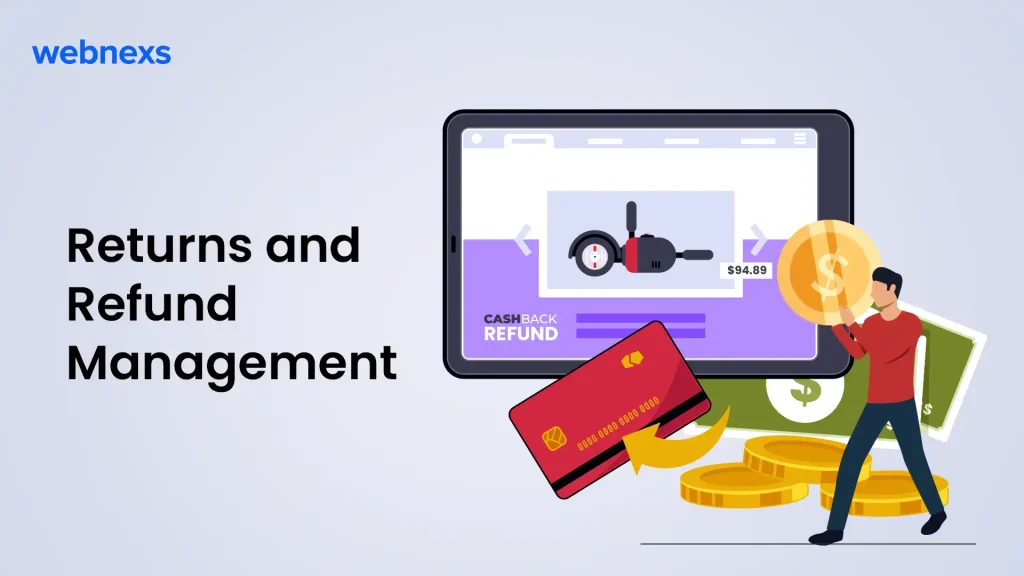
The RMA of the solution is designed to effectively regulate returned transactions, ensuring the best customer service for the purchasers.
30% of all online purchases are returned, and an efficient return management system can reduce processing times by 50%, leading to improved customer satisfaction and retention.
6. Promotion Management

You can create promotional offers to satisfy your business goals and brand promotion. Promotions are often made on the fly, and simply apply and obtain hassle-free outcomes.
45% of online shoppers are more likely to make a purchase when they see discounts and promotional offers. Marketplace owners can see an increase in sales by up to 25% with efficient promotion management systems.
7. Flexible Shipping Options
Vendors can configure zone-based shipping, real-time carrier rates, flat rates, and free shipping rules. The platform supports multi-origin shipping, estimated delivery times, tracking integration, and cost calculators, ensuring seamless logistics and a better customer experience.
67% of online shoppers expect multiple shipping options, including same-day or express delivery. Marketplaces offering flexible shipping solutions can see a 30% increase in conversions, while free shipping incentives can boost average order value by up to 20%.
8. Payment Gateway APIs
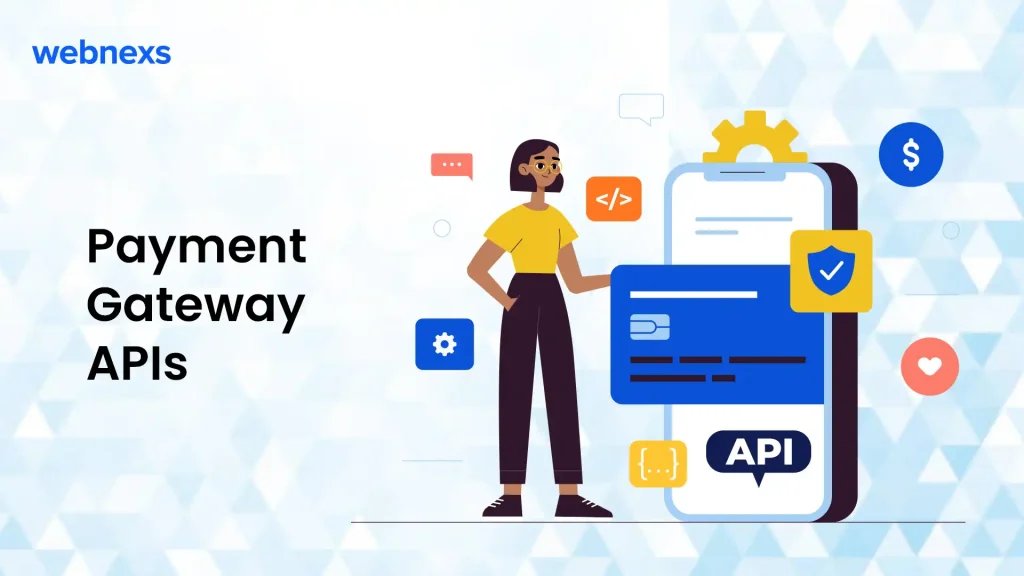
The ecommerce solution offers major payment gateway connectors, enabling you to run your business with no hassle. All the main payment gateways support modern security measures that help build the customer’s confidence while paying online.
87% of online buyers prefer using secure payment gateways that offer seamless and fast payment experiences. Ensuring secure payments helps increase conversion rates by 10-20%.
9. Third-Party Integrations
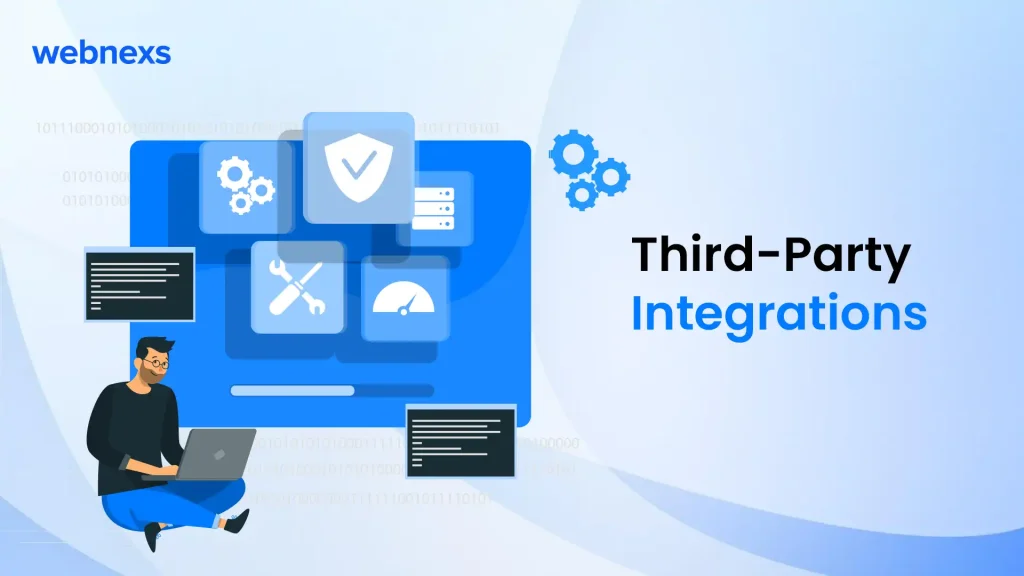
The solution features a rich set of API’s and therefore the workflow is meant to effortlessly perform third-party integrations.
65% of eCommerce platforms integrate with third-party tools for payment processing, customer relationship management (CRM), and inventory management to enhance business operations, driving operational efficiency by 30%.
Visit Here: Best 15 Unique Ecommerce Marketplace Website Features
10. Advanced Search & Filter Options

Providing customers with an efficient search box improves their shopping experience. So, this solution helps customers quickly look for the merchandise they’re trying to find.
70% of online shoppers say they would prefer to leave a site if it doesn’t have an effective search option. Advanced search and filtering improve the shopping experience, reducing cart abandonment by 20-30%.
11. Customizable Storefronts
The solution offers a dedicated vendor interface to design and manage storefronts. Vendors can customize themes, layouts, banners, and branding elements using drag-and-drop editors and templates.
This ensures a personalized shopping experience, improving customer engagement, brand identity, and conversions through seamless customization options.
82% of online shoppers prefer stores with personalized experiences and branding consistency. Multi vendor marketplaces with customizable storefronts see a 30% higher customer retention rate and up to a 20% increase in conversion rates, as tailored storefronts enhance user engagement and trust in the platform.
Enhance User Experience with Top Marketplace Website Features!
12. Customer Support

To provide the best customer service, the solution is enhanced with customer care management, where vendors can manage tickets and complaints and resolve their customers’ problems simply and effectively.
93% of customers are likely to make repeat purchases if they receive excellent customer service. A streamlined customer support module, like ticket management, can improve customer retention rates by 40%.
Visit Here: 8 Steps To Build an Ecommerce Marketplace Website Features like Amazon
13. Marketing and SEO Tools
Vendors benefit from powerful marketing and SEO tools to increase visibility and drive sales. The platform supports SEO-friendly URLs, meta tags, social sharing, email marketing, and discount campaigns.
With built-in analytics, vendors can track performance, optimize strategies, and enhance customer engagement for better marketplace success.
70% of online shoppers begin their purchase journey on search engines, making SEO optimization crucial for marketplace success. Marketplaces using integrated marketing and SEO tools see up to a 30% increase in organic traffic and a 20% boost in conversions, helping vendors attract more customers and maximize sales potential.
14. Dashboard & Reports
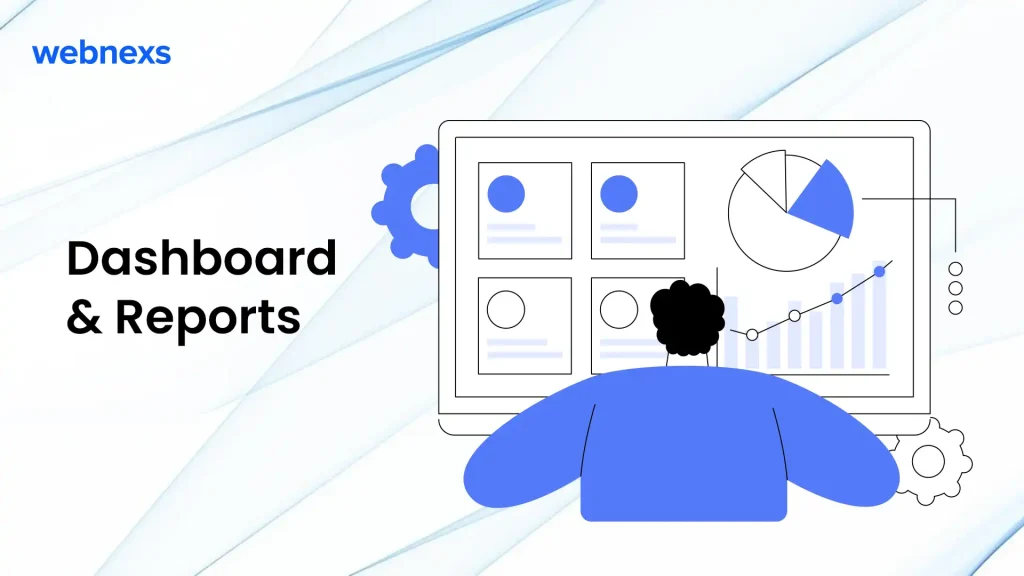
Webnexs multi vendor marketplace solution dashboard is designed to accumulate analytical information. The dashboard can be customized to put different items through drag and drop UI interface.
You’ll also get detailed reports on various crucial aspects of your marketplace to make important business decisions.
70% of business leaders use data-driven reports to inform key decisions. A customizable dashboard with detailed reports helps marketplace owners make better business decisions, improving revenue by 15-20%.
15. Strong Reporting and Analytics
The platform offers powerful analytics tools that help vendors track sales, orders, revenue, and customer trends in real time.
A dedicated dashboard provides insights into top-selling products, refunds, and inventory levels, enabling vendors to make data-driven decisions for pricing, marketing, and stock management.
79% of companies using data-driven insights achieve revenue goals, and marketplaces with strong analytics see a 30% boost in vendor sales, optimizing pricing, inventory, and marketing for higher conversions.
7 Key Benefits of Multi-Vendor Ecommerce Features for Marketplace Owners
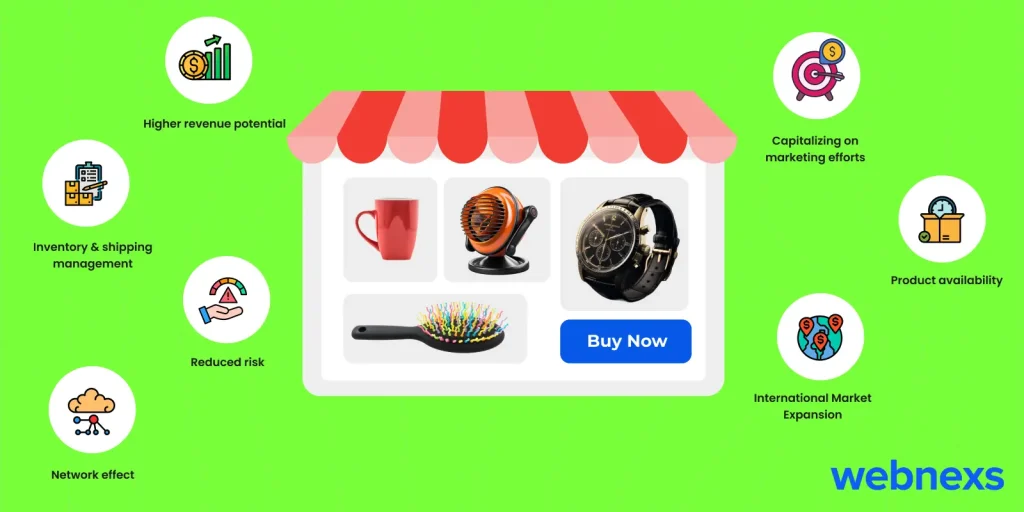
There are seven key advantages of a multi vendor website for the marketplace owner. These include higher revenue potential, efficient inventory and shipping management, reduced risks, vendor-driven marketing, better product availability, international expansion, and the network effect. The following points explain these benefits in detail.
1. Higher Revenue Potential
The sources of income generation are diverse, giving ecommerce marketplace owners an upper hand.
- Commissions
These are laid on each sale made through the marketplace.
- Listing fees
Charges are applied to the products that are listed. It can be a one-time charge or a recurring fee.
- Subscription plans
It is the primary fee that is charged to access the platform and it is recurring in nature. The benefit lies in selecting from a tiered plan basis where you only pay for the features and services that you require.
- Premium features for vendors
These features when offered enable vendors to spend their resources to gain an advantage for better visibility, as a result, the marketplace owner benefits from the added fees.
- Advertising
Vendors pay for advertising and product placements on the homepage or in the search results. This creates an additional source of income for the marketplace owners.
- Value-added services
These include order fulfillment via a center, payment processing, customer support, or even logistics solutions. When these services are charged, they generate additional income.
- Affiliate Marketing
As a passive source of revenue, marketplace owners can generate income by partnering with influencers and third parties and engaging in affiliate marketing programs, especially on a multi vendor ecommerce website. Income is earned when a sale is made through the affiliate link in the form of commissions.
As of 2023, global retail ecommerce sales were estimated at $5.8 trillion, with projections indicating a 39% growth over the subsequent years, expecting to surpass $8 trillion by 2027.
2. Inventory and Shipping Management
A significant amount of financial resources is spent on inventory handling, including storage, warehousing, and shipping, which includes last-mile delivery. This is entirely handled by the vendors and not by the marketplace owners.
The operational overheads are reduced to a greater extent for the marketplace owner.
According to DHL, 85% of vendors in multi vendor platforms handle their own shipping and inventory management, which reduces operational overheads for the marketplace owner.
3. Reduced Risk
The presence of a large number of vendors in the multi vendor marketplace helps in distributing the level of risk associated with a single vendor.
When a particular vendor or the industry as a whole is underperforming, the revenue-generating capacity of the marketplace owner reduces, but this scenario can be eliminated when there are multiple vendors from various industries.
Revenue generation potential can be retained and controlled to a certain level, safeguarding the financial interest of the marketplace owner.
Harvard Business Review study shows that multi vendor marketplaces can reduce operational risk by 40% compared to single-vendor platforms, as they are less dependent on one source of revenue.
4. Capitalizing on Marketing Efforts
The vendors are sure to advertise their products on various digital and traditional advertising channels to drive more traffic to their products and increase conversion rates on online selling platforms.
This benefits the marketplace owner in customer acquisition by capitalizing on their efforts where platform visibility is gained without spending. This type of coasting promotes a healthy relationship between the vendors and the marketplace owners.
McKinsey estimates that vendor-driven marketing efforts can increase platform traffic by 30-40% through organic channels, benefiting the marketplace owner with minimal additional spending.
5. Product Availability
As there are multiple vendors, running out of stock and interruptions to sales are reduced to a greater extent on the best marketplace platforms.
Unavailability with one vendor can be mitigated by the other, the likelihood of the product being available on the same platform is higher. This ensures that the customers don’t have to leave the platform to complete their purchase.
According to Statista, the likelihood of products being available across multiple vendors can increase product availability by up to 50%, reducing stockouts and enhancing customer satisfaction.
6. International Market Expansion
The selling platforms can be scaled to cater to cross-border purchases. Vendors from around the globe can become tied to the platform.
Since the marketplace owners are free from the majority of the operational aspects of maintaining the marketplace, they can easily tap into vendors in other countries.
When the regional market saturates, marketplace owners can use this opportunity to diversify their presence in other potential regions where it has their unique demands.
The global cross-border ecommerce market is expected to reach $4.8 trillion by 2026, with Payoneer reporting that 60% of marketplaces are expanding to international markets.
7. Network effect
When the marketplace starts growing, the existing vendors become a valuable source to bring additional vendors through word-of-mouth. This makes the platform more attractive as a diverse range of products will be listed for sale.
This in turn will attract more vendors to see the revenue potential of the platform. This loop continues as long as the marketplace owner has a scalable and flexible platform that operates with a sophisticated technology stack to be able to handle the heavy load of traffic.
A McKinsey report highlights that marketplaces with strong network effects can see up to 200% growth in vendor acquisition year over year, driven by existing vendors bringing new vendors onto the platform.
Challenges in Running a Multi Vendor Marketplace
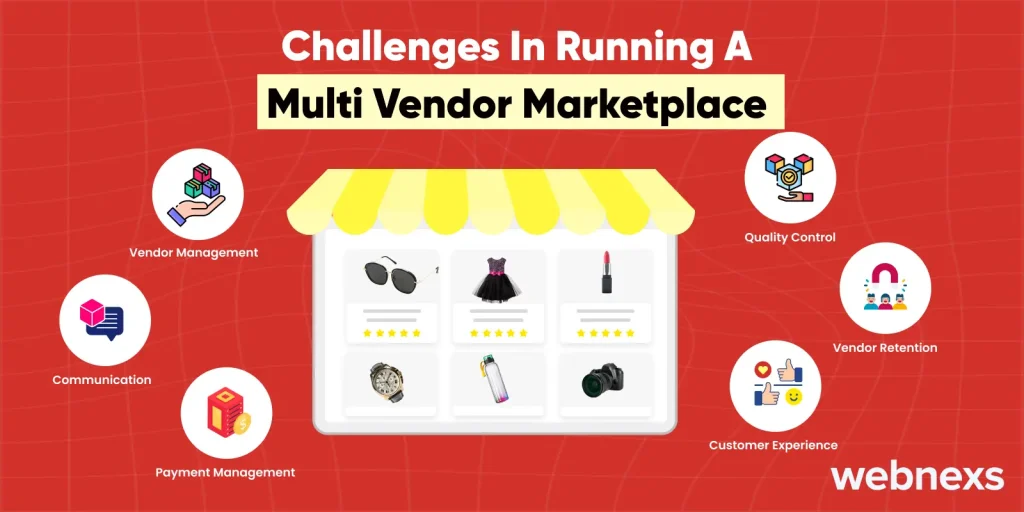
- Vendor Management
Find, onboard, and monitor vendors while addressing performance and issue resolution.
- Communication
Clear vendor communication prevents delays, pricing conflicts, and counterfeit product risks.
- Quality Control
Use review systems, audits, and training to maintain marketplace quality standards.
- Vendor Retention
Manage exit rates by addressing pricing concerns and fee structures.
- Payment Management
Secure, automated payments and clear commission structures build vendor trust.
- Customer Experience
Optimize navigation, transparency, and mobile responsiveness for better retention and lower acquisition costs.
Grow Faster with Multi Vendor Marketplace Features!
Real-Time Success with Etsy’s Multi Vendor Ecommerce Marketplace
Etsy
Etsy is an online marketplace that changed how handmade and vintage items are sold, making it easier for independent sellers to reach customers around the world. It offers features like easy sign-up for sellers, secure payments, and tools to help products show up in search results.
As a result, Etsy now has over 7.5 million active sellers. The site also has a strong review system and a simple shopping experience, which has helped keep customers coming back, with a 40% increase in repeat business.
By supporting different currencies and offering local content, Etsy has grown globally and made $13.3 billion in sales in 2023. This shows how important it is to have a well-built online marketplace.
Build Your Ecommerce Business With Webnexs Multi Vendor Marketplace Platform Features
Webnexs Multi Vendor Platform is designed to make running an online marketplace simple and efficient. It makes it easy for vendors to sign up, manage their products, and track performance.
The platform ensures smooth transactions with secure payment processing, automatic commissions, and real-time order tracking. It also helps vendors bring in more customers with built-in SEO and marketing tools. With support for different currencies, businesses can expand worldwide.
A review system lets customers leave feedback, and the mobile-friendly design makes shopping easy on any device. If you’re looking for a Multi Vendor ecommerce features list that ensures seamless operations and growth, Webnexs provides the essential tools to keep vendors satisfied and boost long-term profits.
Conclusion
To build a successful online marketplace, it’s important to have the right features. A solid Multi Vendor ecommerce features list should include things like easy vendor management, secure payments, flexible shipping, and helpful analytics.
These features help everything run smoothly, improve the customer experience, and support long-term growth.
If you’re looking for a platform that can grow with your business, Webnexs can help you launch and scale your multi vendor ecommerce site. Reach out to us today to see how we can create a marketplace solution that fits your needs.
